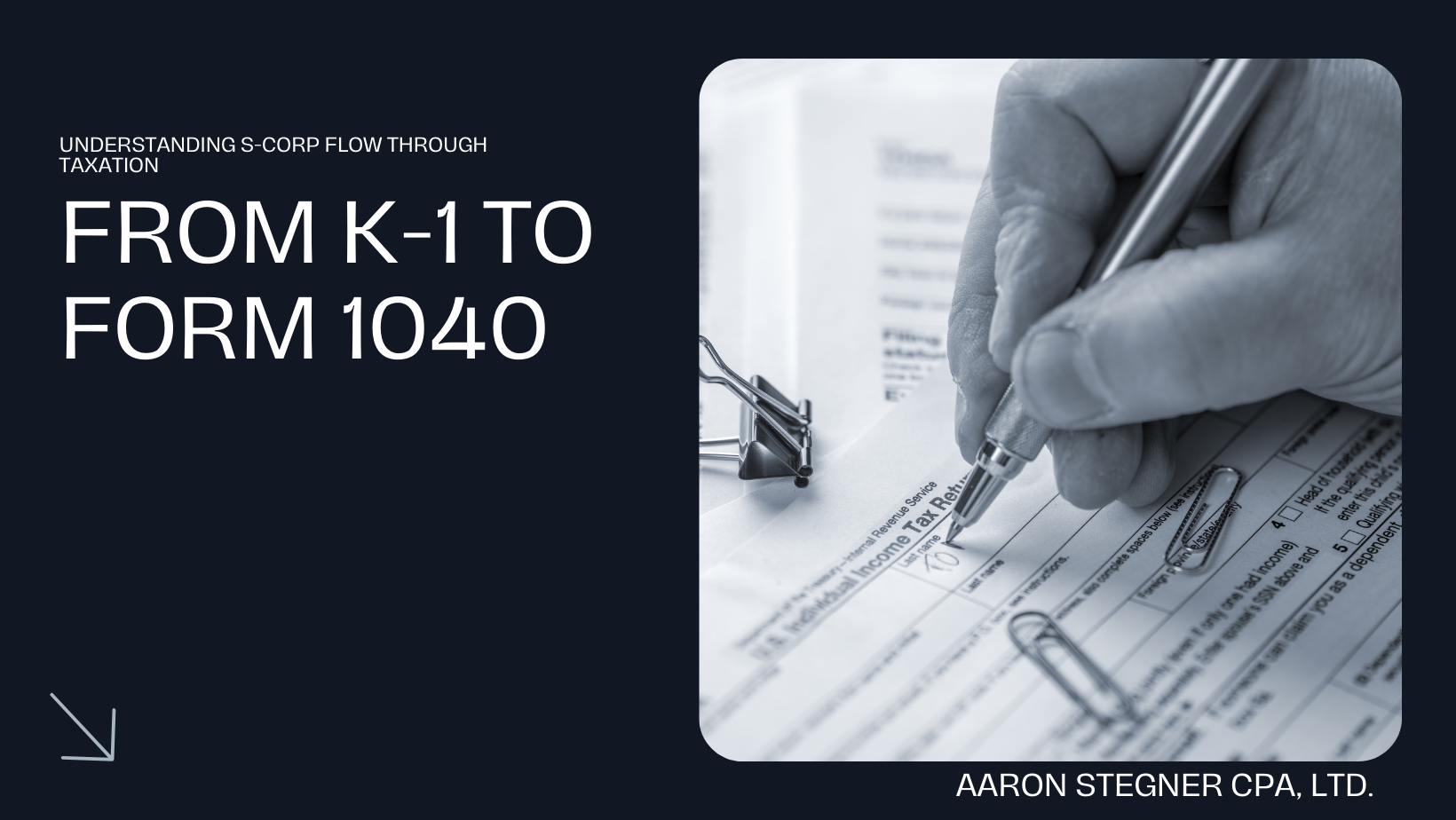

Introduction: Navigating the flow of income from an S-Corporation to your personal tax return can seem complex, but it’s essential for accurate tax reporting. At the heart of this process is the Schedule K-1, which summarizes the owners share of the S-Corp’s income and deductions.
The Role of Form K-1: When an S-Corp earns income, it generally doesn’t pay tax at the corporate level unless the business is utilizing the pass-through entity election. Instead, this income ‘flows through’ to the shareholders. Each shareholder’s portion is reported on Schedule K-1, which outlines their share of the corporation’s income, losses, deductions, and credits including a breakdown of separately stated items.
Ordinary Business Income: Box 1 on the Schedule K-1 reports the ordinary business income (or loss) allocated to each shareholder. This figure represents the shareholder’s portion of the S-Corp’s income, calculated before any separately stated items or deductions. It’s critical because it affects the income tax that shareholders report on their personal returns. This income is taxed at the individual’s rate, not the corporate rate, maintaining the pass-through taxation benefit of an S-Corporation.
Separately Stated Items on K-1: Certain items are ‘separately stated’ on the K-1 because they are calculated, and may be limited, at a personal level. Here’s a brief look at three common items:
Conclusion: Shareholders include their K-1 business income (loss) as well as the separately stated items on their Form 1040. Understanding the relationship between your S-Corp’s earnings and your personal tax obligations is critical. Properly accounting for K-1 items ensures you take advantage of available tax benefits while maintaining compliance. Want to discuss how this applies to your business? Contact us today.
Disclaimer: The tax information provided here is for informational purposes only and should not be construed as or relied upon for tax or legal advice. This information is based on the laws and regulations in effect at the time of issuance, and we do not undertake any obligation to update this information after the date of its release. Please speak with your tax professional or attorney for guidance specific to your circumstances.